- Clone
- ICRF44 (See other available formats)
- Regulatory Status
- RUO
- Workshop
- IV M047
- Other Names
- Integrin αM chain, C3biR, CR3, Mac-1, Mo1, ITGAM
- Isotype
- Mouse IgG1, κ
- Ave. Rating
- Submit a Review
- Product Citations
- publications
CD11b is a 165-170 kD type I transmembrane glycoprotein also known as αM integrin, Mac-1, CR3, and C3biR. CD11b non-covalently associates with integrin β2 (CD18) and is expressed on granulocytes, monocytes/macrophages, dendritic cells, NK cells, and subsets of T and B cells. CD11b/CD18 is critical for the transendothelial migration of monocytes and neutrophils. It is also involved in granulocyte adhesion, phagocytosis, and neutrophil activation. CD11b/CD18 interacts with ICAM-1 (CD54), ICAM-2 (CD102), ICAM-4, CD14, CD23, heparin, iC3b, fibrinogen, and factor X.
Product DetailsProduct Details
- Verified Reactivity
- Human, Cynomolgus, Rhesus
- Reported Reactivity
- African Green, Baboon, Chimpanzee, Common Marmoset, Pig
- Antibody Type
- Monoclonal
- Host Species
- Mouse
- Formulation
- Phosphate-buffered solution, pH 7.2, containing 0.09% sodium azide
- Preparation
- The antibody was purified by affinity chromatography and conjugated with Spark Red™ 718 under optimal conditions.
- Concentration
- 0.2 mg/mL
- Storage & Handling
- The antibody solution should be stored undiluted between 2°C and 8°C, and protected from prolonged exposure to light. Do not freeze.
- Application
-
FC
- Recommended Usage
-
Flexi-Fluors™ are provided at a standard 0.2 mg/mL concentration. We recommend titrating this reagent to determine the optimal concentration for each application. For many flow cytometry applications, conjugated antibodies perform well at concentrations ranging from 0.03 to 1.0 µg per million cells in 100 µL. We recommend testing a range of concentrations starting from 10 µg/mL.
For example, make five 1:1 serial dilutions of the 0.2 mg/mL antibody. Add 5 µL of each dilution (including the undiluted antibody) to 100 µL of cells (at 107 cells/mL) to test six concentrations -- 1.0, 0.5, 0.25, 0.125, 0.06, and 0.03 µg per million cells in 100 µL volume. Compare staining patterns or create a titration curve using the MFI or staining index to determine the optimal concentration.
* Spark Red™ 718 has a maximum excitation of 697 nm and a maximum emission of 711 nm. - Excitation Laser
-
Red Laser (633 nm)
- Application Notes
-
The ICRF44 antibody inhibits heterotypic adhesion of granulocytes in response to fMLP. Additional reported applications (for the relevant formats) include: immunohistochemical staining of acetone-fixed frozen tissue sections, immunofluorescence microscopy5, stimulation of monocytes3, blocking of heterotypic PMN aggregation8, and blocking of granulocyte activation12. This clone was tested in-house and does not work on formalin fixed paraffin-embedded (FFPE) tissue.
The Ultra-LEAF™ purified antibody (Endotoxin < 0.01 EU/µg, Azide-Free, 0.2 µm filtered) is recommended for functional assays (Cat. Nos. 301361 & 301362). - Additional Product Notes
-
For more information about Flexi-Fluors™, visit our Flexi-Fluor™ page and review FAQs associated with this product line.
- Application References
-
- Knapp W. 1989. Leucocyte Typing IV. Oxford University Press New York.
- Barclay N, et al. 1997. The Leucocyte Antigen Facts Book. Academic Press Inc. San Diego.
- Rezzonico R, et al. 2001. Blood 97:2932. (Stim)
- Marsik C, et al. 2003. Shock 20:493. (FC)
- David A, et al. 2003. J. Leukoc. Biol. 74:551. (IF)
- Charles N, et al. 2010. Nat. Med. 16:701. (FC) PubMed
- Thurlow LR, et al. 2010. Infect. Immun. 128:1128. (FC) PubMed
- Jadhav S, et al. 2001. J. Immunol. 167:5986. (Block)
- Yoshino N, et al. 2000. Exp. Anim. (Tokyo) 49:97. (FC)
- Sestak K, et al. 2007. Vet. Immunol. Immunopathol. 119:21. (FC)
- Wen T, et al. 2014. J Immunol. 192:5481. (FC) PubMed
- Sprong T, et al. 2003. Blood 102:3702. (Block)
- Cash JL, et al. 2013. EMBO Rep. 14:999. (FC) PubMed
- Larsson K, et al. 2015. PNAS. PubMed
- RRID
-
AB_3106334 (BioLegend Cat. No. 285077)
Antigen Details
- Structure
- Integrin, type I transmembrane glycoprotein, associates with integrin β2 (CD18), 165-170 kD
- Distribution
-
Granulocytes, monocytes/macrophages, dendritic cells, NK cells, subset of T cells, subset of B cells
- Function
- Adhesion, phagocytosis, chemotaxis, neutrophil activation
- Ligand/Receptor
- ICAM-1(CD54), ICAM-2 (CD102), ICAM-4, CD14, CD23, heparin, iC3b, fibrinogen, factor X
- Cell Type
- B cells, Dendritic cells, Granulocytes, Macrophages, Monocytes, Neutrophils, NK cells, T cells, Tregs
- Biology Area
- Cell Adhesion, Cell Biology, Costimulatory Molecules, Immunology, Innate Immunity, Neuroscience, Neuroscience Cell Markers
- Molecular Family
- Adhesion Molecules, CD Molecules
- Antigen References
-
1. Stewart M, et al. 1995. Curr Opin Cell Biol. 7:690.
- Gene ID
- 3684 View all products for this Gene ID
- UniProt
- View information about CD11b on UniProt.org
Related FAQs
- What are Flexi-Fluors?
-
Flexi-Fluors are rapidly made-to-order conjugated antibodies. The technology, manufacturing processes, and specifications used to create Flexi-Fluors are the same as our regular catalog products. However, the optimal concentration and performance of each Flexi-Fluor must be determined by the customer.
- How quickly will I receive my order?
-
We aim to ship Flexi-Fluors within 2-3 weeks of receipt of your order. However, depending on your location, shipping times may vary.
- How are Flexi-Fluors different from regular catalog products?
-
Flexi-Fluors are made on demand, specifically for you. Flexi-Fluors are manufactured using the same high-quality standards, and specifications as other catalog products. For faster delivery, Flexi-Fluors are not tested by flow cytometry to determine optimal concentrations or evaluate performance. This testing needs to be performed by the customer.
- How do I determine the optimal concentration for using my Flexi-Fluor? How should I titrate my antibody?
-
Flexi-Fluors are provided at a standard 0.2 mg/mL concentration. We recommend that you titrate your antibody to determine the optimal concentration to use for your application. For many flow cytometry applications, conjugated antibodies perform well at concentrations ranging from 0.03 to 1.0 µg per million cells in 100 µL volume. We recommend that you test a range of concentrations starting from 10 µg/mL.
For example, make five 1:1 serial dilutions of your 0.2 mg/mL antibody. Add 5 µL of each dilution (including the undiluted antibody) to 100 µL of cells (at 107 cells/ml) to test six concentrations - 1.0, 0.5, 0.25, 0.125, 0.06, and 0.03 µg per million cells in 100 µL volume. Compare staining patterns or create a titration curve using the MFI or staining index to determine the optimal concentration.
- I can’t find the antibody-dye combination that I need. When will it be available?
-
We continuously update our catalog, introducing scores of new products every month. Please get in touch with our Technical Service team for an update on new products or recommendations for suitable alternatives to complete your panel. Or contact Custom Solutions to inquire about our affordable custom conjugation services.
- I need help to validate the performance of my Flexi-Fluor. Who should I contact?
-
Please get in touch with Technical Service for assistance.
- Can I order more than 50 μg of a Flexi-Fluor?
-
Yes, you can order multiple vials of the same Flexi-Fluor products. We cannot guarantee, however, that these vials will be bottled from the same lot. For bulk single-lot orders, contact our Custom Solutions team.
- What is the expiration date of my Flexi-Fluor?
-
Expiration dates can be found on the vial label or by using our CoA lookup tool.
Other Formats
View All CD11b Reagents Request Custom ConjugationCompare Data Across All Formats
This data display is provided for general comparisons between formats.
Your actual data may vary due to variations in samples, target cells, instruments and their settings, staining conditions, and other factors.
If you need assistance with selecting the best format contact our expert technical support team.
-
APC anti-human CD11b
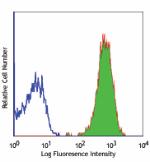
Human peripheral blood granulocytes stained with ICRF44 APC -
Biotin anti-human CD11b

Human peripheral blood granulocytes stained with biotinylate... -
PE anti-human CD11b

Human peripheral blood granulocytes were stained with CD11b ... -
PE/Cyanine5 anti-human CD11b

Human peripheral blood lymphocytes, monocytes, and granulocy... -
Purified anti-human CD11b
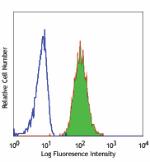
Human peripheral blood granulocytes stained with purified IC... -
Pacific Blue™ anti-human CD11b
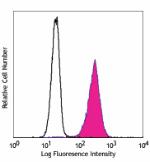
Human peripheral blood granulocytes stained with ICRF44 Paci... -
Alexa Fluor® 488 anti-human CD11b

Human peripheral blood lymphocytes, monocytes, and granulocy... -
Alexa Fluor® 647 anti-human CD11b
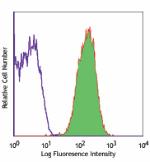
Human peripheral blood granulocytes stained with ICRF44 Alex... -
PE/Cyanine7 anti-human CD11b
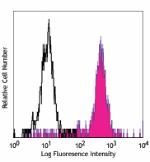
Human peripheral blood monocytes stained with ICRF44 PE/Cyan... -
PerCP/Cyanine5.5 anti-human CD11b

Human peripheral blood lymphocytes, monocytes, and granulocy... -
Brilliant Violet 421™ anti-human CD11b
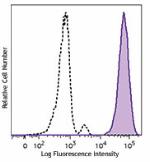
Human peripheral blood granulocytes were stained with CD11b ... 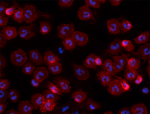
Human neutrophils were fixed with 1% paraformaldehyde (PFA) ... -
Brilliant Violet 570™ anti-human CD11b
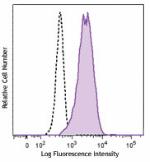
Human peripheral blood granulocytes were stained with CD11b ... -
FITC anti-human CD11b
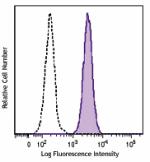
Human peripheral blood granulocytes were stained with CD11b ... -
Brilliant Violet 605™ anti-human CD11b
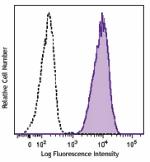
Human peripheral blood granulocytes were stained with CD11b ... -
Brilliant Violet 510™ anti-human CD11b
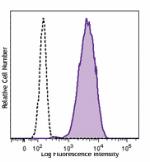
Human peripheral blood granulocytes were stained with CD11b ... 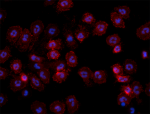
Human neutrophils were fixed with 1% paraformaldehyde (PFA) ... -
Brilliant Violet 650™ anti-human CD11b
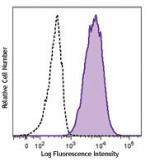
Human peripheral blood granulocytes were stained with CD11b ... -
Purified anti-human CD11b (Maxpar® Ready)
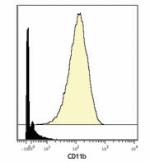
Human PBMCs stained with 144Nd-anti-CD11b (ICRF44). T lympho... -
Alexa Fluor® 594 anti-human CD11b
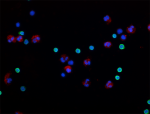
Human peripheral blood mononuclear cells and neutrophil mixe... 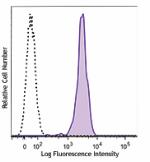
Human peripheral blood granulocytes were stained with CD11b ... -
APC/Cyanine7 anti-human CD11b

Human peripheral blood lymphocytes, monocytes, and granulocy... -
Brilliant Violet 711™ anti-human CD11b
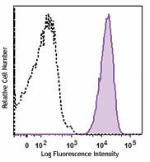
Human peripheral blood granulocytes were stained with CD11b ... -
Brilliant Violet 785™ anti-human CD11b
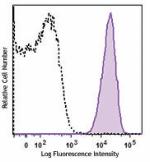
Human peripheral blood granulocytes were stained with CD11b ... -
PE/Dazzle™ 594 anti-human CD11b
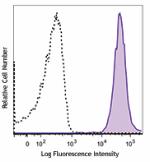
Human peripheral blood granulocytes were stained with CD11b ... -
APC/Fire™ 750 anti-human CD11b
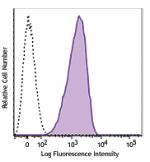
Human peripheral blood granulocytes were stained with CD11b ... -
APC anti-human CD11b

Typical results from human peripheral blood granulocytes sta... -
PE anti-human CD11b

Typical results from human peripheral blood granulocytes sta... -
TotalSeq™-A0161 anti-human CD11b
-
Alexa Fluor® 700 anti-human CD11b

Human peripheral blood lymphocytes, monocytes, and granulocy... -
PE/Cyanine7 anti-human CD11b

Typical results from human peripheralblood monocytes stained... -
TotalSeq™-B0161 anti-human CD11b
-
TotalSeq™-C0161 anti-human CD11b
-
PerCP/Cyanine5.5 anti-human CD11b

Typical results from human peripheral blood granulocytes sta... -
Ultra-LEAF™ Purified anti-human CD11b

Human peripheral blood granulocytes stained with purified IC... -
TotalSeq™-D0161 anti-human CD11b
-
GMP PE/Cyanine7 anti-human CD11b
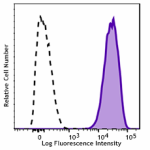
Typical results from human peripheral blood granulocytes sta... -
Pacific Blue™ anti-human CD11b
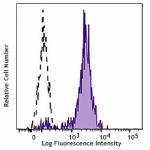
Typical results from human peripheral blood granulocytes sta... -
GMP PE anti-human CD11b
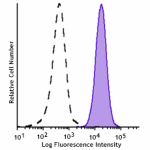
Typical results from human peripheral blood granulocytes sta... -
Spark UV™ 387 anti-human CD11b
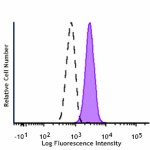
Human peripheral blood granulocytes were stained with anti-h... -
GMP PerCP/Cyanine5.5 anti-human CD11b
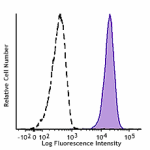
Typical results from human peripheral blood granulocytes sta... -
FITC anti-human CD11b
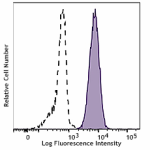
Typical results from human peripheral blood Granulocytes sta... -
APC/Fire™ 750 anti-human CD11b
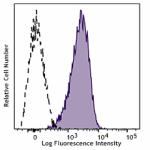
Typical results from human peripheral blood granulocytes sta... -
GMP APC anti-human CD11b
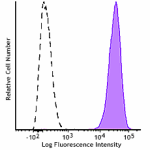
Typical results from human peripheral blood granulocytes sta... -
GMP FITC anti-human CD11b
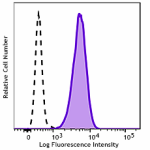
Typical results from human peripheral blood Granulocytes sta... -
GMP APC/Fire™ 750 anti-human CD11b
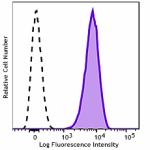
Typical results from human peripheral blood granulocytes sta... -
Spark Blue™ 515 anti-human CD11b
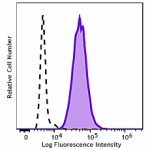
Human peripheral blood granulocytes were stained with anti-h... 
Human peripheral blood lymphocytes, monocytes, and granulocy... -
Spark Violet™ 500 anti-human CD11b

Human peripheral blood granulocytes were stained with anti-h... -
Spark Red™ 718 anti-human CD11b (Flexi-Fluor™)
-
APC/Fire™ 810 anti-human CD11b

Human peripheral blood leukocytes were stained with anti-hum... -
Brilliant Violet 750™ anti-human CD11b Antibody

Human peripheral blood leukocytes were stained with anti-hum...

 Login / Register
Login / Register 














Follow Us